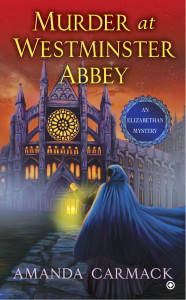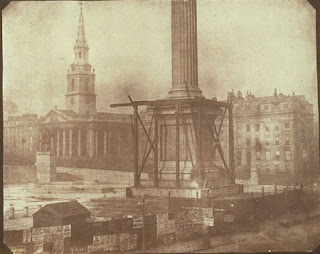As I’m working on finishing up Lucy and Thrale’s story (Sinclair Sisters, Book 2) I’m researching boxing and the like. I came across this interesting article: Hazlitt’s Prizefight Revisted, Pierce Egan and Jon Bee’s Boxiana-Style Perspective by David Snowdon posted at Romantic Textualities. Make a note, because it’s a fascinating article.
Which is not what my post is about. My post is about this book by John Bee:
Sportsman’s Slang, a New Dictionary of Terms used in the Affairs of The Turf, The Ring, The Chase, and The Cock-Pit; with Those of the Bon-Ton and The Varieties of Life, Forming the Completest and Authentic Lexicon Balatronicum et Macaronicum, particularly Adapted to the use of The Sporting World for elucidating Words and Phrases that are Necessarily, or Purposely, Rendered cramp, mutative, and unintelligible, outside their respective Spheres. Interspersed with Anecdotes and Whimsies, With Tart Quotations, And Rum-Ones; With Examples, Proofs, And Monitory Precepts Useful and Proper for Novices, Flats, and Yokels. Editio altera.
Let’s call it Sportsman’s Slang for short, eh?
Here’s a definition that answered a long-held question of mine (In the text, this is all one paragraph, but that’s too visually dense so I have added paragraphs for readability:
Bon ton: highflier Cyprians and those who run after them; from Bon–good easy–and ton or tone; the degree of tact and tension to be employed by modish people; frequently called ‘the ton’ only. Persons taking up good portions of their hours in seeking pleasure are of the Bon-ton, as stage actors and frequenters of play houses, visitors at watering-places officers &c. &c. See Haut ton.
In Paris they are both called Le bon genre. The appellation is much oftener applied than assumed. High life, particularly of whoredom: he who does not keep a girl or part of one, cannot be of the Bon ton; when he ceases, let him cut. Bon ton is included in haut-ton, and is French for that part of society who live at their ease, as to income and pursuits, whose manners are tonish, and who, like other divisions of society, employ terms of their own, which rather sparingly they engraft on the best King’s English. Mascul. et Fem.
Terms which denote the ton: ‘The go, the mode, or pink of the mode; bang-up, the prime of life, or all prime; the thing, the dash, and a dasher; quite the Varment–a four-in-hand, a whip, a very jarvy; a swell, a diamond of the first water.’ None can expect to attain perfection in all these unless he could obtain the same assistance that Faustus had, viz. Leviathan; and then he could not begrudge to meet the same end.
OK, so the phrase I have often wondered about is “Diamond of the First Water” as applied to a person. This is the first time I’ve seen the phrase in period literature. Mind you, here it’s used with a definite note of, shall we say ironic contempt? But here, we do not see the term specifically applied to a woman, and if it were, we might be excused for thinking Bee meant to imply a whore.
At any rate, I’ve wondered if the phrase might be a Heyer-ism, but if it is, she had some period authority for it. In fact, as I’ve been scanning through this, there are so many phrases I recognize from Heyer and her successors that I began to think she must have had this book in her library.
Are there phrases you’ve often wondered about?
Edited to Add!
There are dozens of uses of “Diamond of the First Water” with respect to jewelry and many that, in the same breath, mention giving that jewelry to a mistress who expects such a gift, but also many that apply the term to things that are not diamonds– and from there it’s really not hard to imagine applying the phrase to a woman. And, there are some. In the one below, we see a rather racy application of the term from dialog in a play which I include here because it made me laugh.
From Dissipation: A Comedy in Five Acts. As it is Performed at the Theatre-Royal, by Miles Peter Andrews, 1781.
EPHRAIM: What ish impossible! There ish your friend Lady Rentless that I wash more intimate with than you are Maisher Alderman, for all you are my Lord’s captain.
ALDERMAN: You intimate with my Lady? Why she’s the very pink of the mode, makes fashions for the whole town, gives entertainments to the whole town, sits up all night. Why, drill me, but she’s a diamond of the first water.
EPHRAIM: Aye; I love the diamond of the first water and have got the possession of most of them.
 Speaking of things to read….my publisher just sent me a few extra ARCs of my next Amanda Carmack mystery (Murder at Westminster Abbey, book two of the Kate Haywood Elizabethan Mysteries, out in April). So let’s give them away today! I have 4 copies, so 4 commenters will be winners. And now I’m diving back into revisions for The Book That Will Never End (affectionately called, of course…)
Speaking of things to read….my publisher just sent me a few extra ARCs of my next Amanda Carmack mystery (Murder at Westminster Abbey, book two of the Kate Haywood Elizabethan Mysteries, out in April). So let’s give them away today! I have 4 copies, so 4 commenters will be winners. And now I’m diving back into revisions for The Book That Will Never End (affectionately called, of course…)




